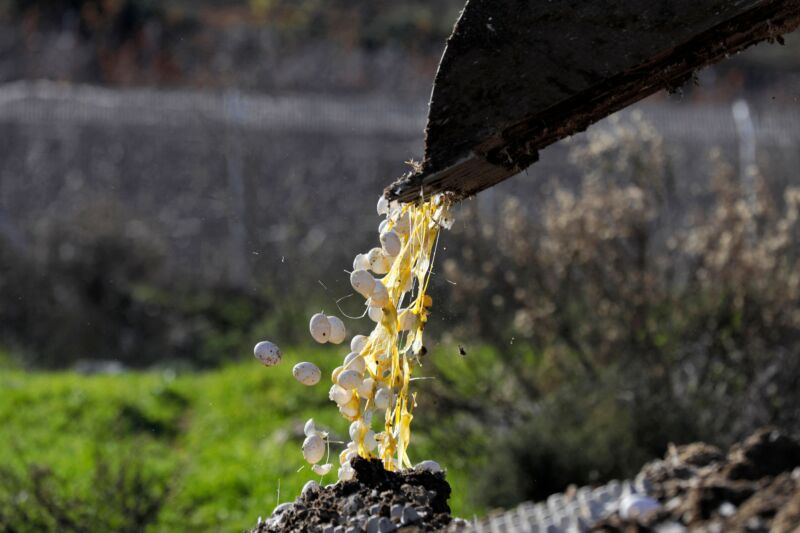The flare-up of highly pathogenic bird flu continues to widen in US livestock after federal officials confirmed last week that the virus has spread to US cows for the first time. The virus has now been detected in dairy cows in at least five states, a single person in Texas exposed to infected cows, and an egg farm in Texas, all spurring yet more intense monitoring and biosecurity vigilance as the situation continues to evolve.
As of Tuesday, seven dairy herds in Texas, two in Kansas, and one each in Idaho, Michigan, and New Mexico had tested positive for the virus. The affected dairy herd in Michigan had recently received cows from one of the infected herds in Texas. It remains unclear if there is cow-to-cow transmission of the flu virus.
The virus—a highly pathogenic H5N1 avian influenza or HPAI—has been devastating wild birds worldwide for the past several years. Throughout the devastating outbreak, the flu virus has spilled over to various species, including big cats in zoos, river otters, bears, dolphins, seals, squirrels, and foxes. While cows were an unexpected addition to the list, federal officials noted last week that affected dairy farms had found dead wild birds on their farms, suggesting that wild birds introduced the virus to the cows, not an intermediate host.
On Monday, the Centers for Disease Control and Protection reported that a person in Texas who had contact with infected dairy cows had tested positive for the HPAI. The person's only symptom was eye redness. The CDC said the person was treated with an antiviral for flu and was recovering. It is the second case of HPAI found in a person in the US. The first case was in a person in Colorado who was directly exposed to poultry infected with the virus. In that case, the person's only symptom was fatigue over a few days. The person recovered. The CDC considers the risk of HPAI to the general public to be low.
Low risk
Meanwhile, the virus continues to spread to less-surprising animals: chickens. On Tuesday, Cal-Maine Foods, Inc., the country's largest producer of fresh eggs, reported that HPAI was detected in one of its facilities in Texas. The facility is located in Parmer County, which sits at the border of Texas and New Mexico. It's unclear if the egg facility is close to any of the affected dairy herds. Cal-Maine, following the US Department of Agriculture biosecurity protocols, immediately shut down the facility. Approximately 1.6 million hens and 337,000 pullets—young hens—were culled. Cal-Maine said the hens represented about 3.6 percent of the company's total flock.
Since the outbreak began in wild birds, the virus has led to the deaths of over 82 million commercial and backyard birds in the US, with 48 states affected and over 1,000 outbreaks reported. The infections have spurred increases in egg and poultry prices.
It's unclear if the virus will have the same effect on milk or beef, but so far, it appears that it will not. In the infected herds, the virus appears to only be affecting a small percentage of animals, particularly older animals, and they generally recover. As the USDA puts it there's "little to no associated mortality reported." Milk from sick cows is always diverted from the milk supply, but even if milk contaminated with HPAI were to make it into the supply, the virus would be destroyed in the pasteurization process.
Still, the continued, widespread outbreak and spillovers of HPAI in various species highlight the ever-present risk that influenza viruses could mix together, combining genetic fragments of different strains (genetic reassortment) to create a new strain that could spark outbreaks or even a pandemic in humans. In the current outbreak among dairy cattle, federal researchers were quick to check the genetic sequence of the HPAI, finding that, so far, the strain lacks mutations in key genetic regions that would signal the virus has become more infectious to humans. For now, the USDA and the CDC report that the risk to the public is low.



3175x175(CURRENT).thumb.jpg.b05acc060982b36f5891ba728e6d953c.jpg)
Recommended Comments
There are no comments to display.
Join the conversation
You can post now and register later. If you have an account, sign in now to post with your account.
Note: Your post will require moderator approval before it will be visible.